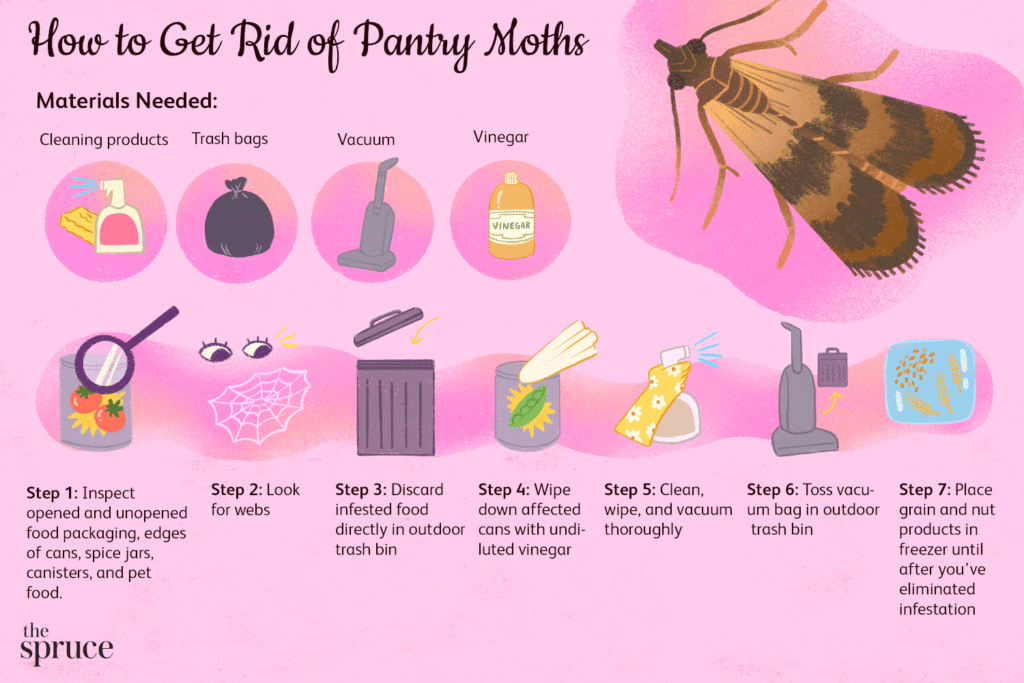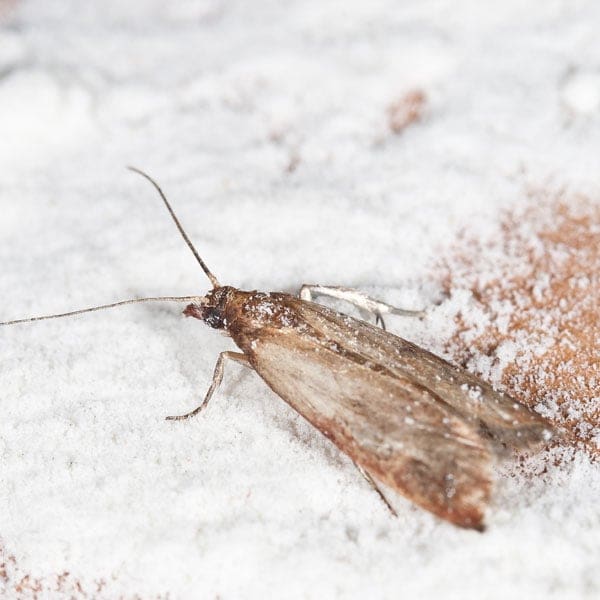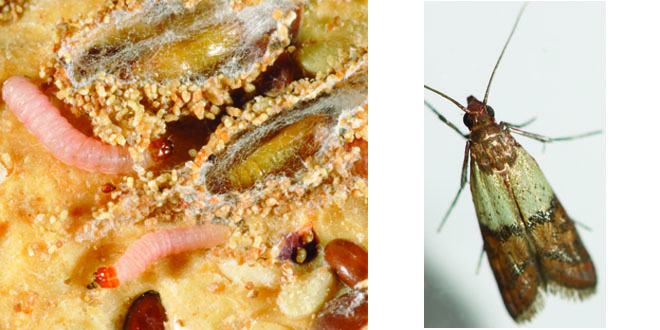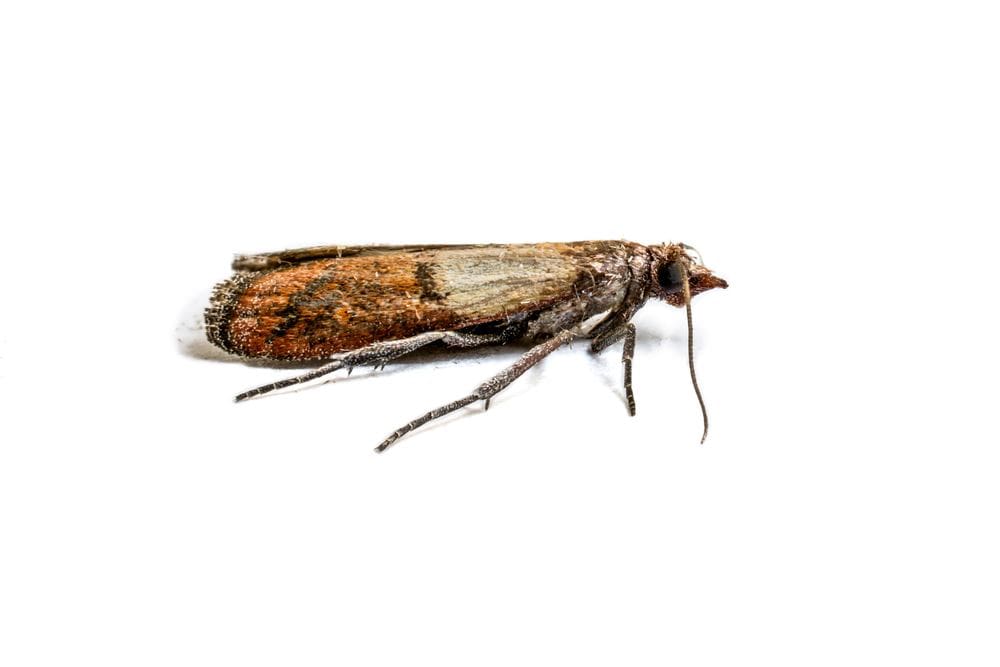If you’ve ever opened your pantry to find pesky moths fluttering around your food, you know how frustrating and unappetizing it can be. In this article, we’ll explore the best ways to prevent pantry moths from infesting your food stores and natural methods to control their population. From simple preventative measures to eco-friendly remedies, you’ll discover practical tips to keep those unwanted pantry guests at bay. So, grab a cup of tea and let’s dive into the world of pantry moth prevention and natural control.
Introduction to Moths in the Pantry
Moths in the pantry can be a frustrating and unsightly problem. These pests have a knack for infiltrating our food storage areas, leaving behind damage and contamination. In this article, we will explore the problem of moths in the pantry, the importance of prevention, and natural control methods to keep these unwanted visitors at bay.
Understanding the Problem of Moths in the Pantry
Moths in the pantry can cause significant damage to our food supplies. Various species of pantry moths, including the Indian meal moth, Mediterranean flour moth, and almond moth, are known for their ability to infest and reproduce rapidly. These moths lay eggs on various food items such as grains, cereals, nuts, and dried fruits. When the eggs hatch, the larvae feed on the stored food, leaving behind silk webs and fecal matter. These signs of infestation can render our pantry items unfit for consumption and lead to financial losses.

The Importance of Prevention and Natural Control
Prevention is key when it comes to dealing with moths in the pantry. By implementing simple yet effective prevention methods, we can avoid the hassle and expense of dealing with a full-blown infestation. Natural control methods are also advantageous as they minimize the use of harmful chemicals, making them safe for both our health and the environment. Let’s dive into the details of both prevention and natural control methods.
Identifying Moths in the Pantry
Before we can tackle the problem, we must first identify the types of moths that may be lurking in our pantry. The most common pantry moths include the Indian meal moth, Mediterranean flour moth, and almond moth. These moths vary in size and appearance but share similar behaviors and habits.
To identify if you have a moth infestation, keep an eye out for signs such as silk webs in food packaging, small holes in food items, and the presence of moth larvae or cocoons. If you notice any of these signs, it’s essential to take immediate action to prevent further infestation.

Preventing Moths In the Pantry
Keeping a clean and organized pantry is crucial in preventing moth infestations. Start by regularly removing expired or unused food items and thoroughly cleaning the pantry shelves. Wipe down any spills or crumbs that might attract moths and store food in airtight containers to prevent easy access for these pests.
Proper food storage techniques can also deter moths from infesting your pantry. Store grains, cereals, and other susceptible items in glass or plastic containers with tight-fitting lids. Avoid leaving food items open or unsealed, as moths can detect these food sources and quickly make themselves comfortable.
Sealing entry points is another effective method of preventing moths from entering your pantry. Inspect the walls, ceilings, and floorboards for any cracks or gaps that moths can use as entryways. Seal these openings with caulk or another appropriate sealant to deny moths access to your pantry.
Regular inspection and monitoring are critical in maintaining a moth-free pantry. Check your stored food items frequently for signs of infestation, even if you haven’t noticed any immediate problems. Early detection can help prevent a small infestation from turning into a major headache.
Natural Control Methods
If prevention methods alone aren’t enough to rid your pantry of moths, natural control methods can come to the rescue. These methods are safe and environmentally friendly, making them a popular choice for those seeking pest control alternatives.
Using moth repellent herbs and spices can be a simple yet effective way to discourage moths from infesting your pantry. Lavender, rosemary, thyme, and bay leaves are natural deterrents that can be placed in pantry corners, shelves, or near food storage containers. The strong scents of these herbs and spices repel moths and keep them away from your precious food items.
Essential oils can also be utilized as moth repellents. Cedarwood, lavender, and peppermint essential oils are particularly effective in repelling moths. Place a few drops of these oils on cotton balls and strategically position them in your pantry. The strong aroma of the oils will help keep moths at bay.
Traps and pheromone lures can be used to capture and eliminate adult moths. Sticky traps can be placed near infested areas to attract and trap moths. Pheromone lures, which emit synthetic sex hormones, can be used in combination with sticky traps to attract and capture male moths. These control methods help break the reproductive cycle of moths, reducing their population over time.
Vacuuming and cleaning your pantry on a regular basis is essential in controlling and eliminating moth infestations. Not only does this remove any existing moth larvae or cocoons, but it also helps remove food debris that may attract moths. Vacuum thoroughly, paying special attention to corners, cracks, and crevices where moths may hide.

Moth-Proofing Pantry Containers
Choosing the right pantry containers plays a significant role in preventing moth infestations. Opt for glass or plastic containers with tight-sealing lids to keep moths out. These containers provide a barrier between moths and your food items, preventing contamination and spoilage.
Sealing containers effectively is crucial to ensure moths cannot enter. Inspect containers for any cracks or gaps in the lids and replace or repair as necessary. Consider using containers with airtight seals, such as those with silicone gaskets or snap-lock lids, to provide an extra layer of protection against pantry moths.
Using airtight bags and vacuum sealers is another effective way to moth-proof your pantry items. When storing grains or other susceptible foods, transfer them to airtight bags and remove as much air as possible before sealing. Vacuum sealers can also be used to remove air and create a tight seal, preventing moths from accessing your stored food.
Home Remedies for Moth Infestations
If you discover that your pantry is already infested with moths, there are several home remedies you can try to eliminate these unwanted guests. Freezing infested items is a simple yet effective method. Place infested items in airtight bags or containers and freeze them for at least a week. The extreme cold temperatures will kill any eggs, larvae, or moths present.
Heat treating infested items can also be an effective remedy. Place infested items, such as grains or dried fruits, in an oven preheated to 120 degrees Fahrenheit for approximately 30 minutes. The heat will kill any eggs or larvae hiding in the food, effectively eliminating the infestation.
Bay leaves and cedar chips can be used as natural deterrents to prevent moths from infesting your pantry. Place these items in pantry corners and shelves, or even inside storage containers, to discourage moths from making themselves at home. The strong aroma of bay leaves and cedar chips is a natural moth repellent.

Hiring Professional Moth Control Services
In some cases, a severe moth infestation may require professional help. Knowing when to consider professional assistance is crucial in preventing the infestation from spreading and causing further damage. If your prevention and natural control efforts have failed to resolve the problem, it’s time to call in the experts.
When looking for a reputable pest control company, consider a few key factors. Look for companies that are licensed and insured, ensuring they have the necessary expertise and resources to handle the infestation. Read reviews and ask for recommendations from friends and family to find a company with a solid reputation for effective moth control.
Frequently Asked Questions (FAQs)
Are pantry moths harmful?
While pantry moths themselves are not harmful, their larvae can contaminate food and cause health risks. Consuming food infested with moth larvae can lead to digestive issues such as stomachache or diarrhea. Additionally, the presence of moth larvae and their waste can create an unpleasant smell and taste in the affected food items.
How long does it take to get rid of pantry moths?
The time it takes to get rid of pantry moths largely depends on the severity of the infestation and the control methods employed. It can take anywhere from a few weeks to a few months to completely eradicate a moth infestation. Consistency in implementing prevention and natural control methods is key to effectively eliminating pantry moths.
Can pantry moths be prevented completely?
While it may be challenging to prevent pantry moths completely, implementing proper prevention methods can significantly reduce the risk of infestation. Regular cleaning, organizing, and storing food in airtight containers are crucial preventive measures. However, it’s essential to remain vigilant and regularly inspect your pantry to catch any potential signs of an infestation early on.
Can pantry moths infest other areas of the house?
While pantry moths primarily infest food storage areas like the pantry, they can potentially spread to other areas of the house. Pantry moths are attracted to food sources, so they may venture into other rooms in search of sustenance. It’s important to take immediate action at the first sign of a moth infestation and thoroughly inspect other areas of your home for any signs of moth activity.

Product Reviews for Moth Control
To provide you with a comprehensive overview, we have compiled a list of recommended products for moth control. These products have received positive reviews and can be effective in preventing and eliminating pantry moth infestations.
Moth Repellent Herbs and Spices
-
Lavender: Known for its pleasant fragrance, lavender can be used to deter moths from entering your pantry. Place a few dried lavender sachets or small sachets filled with lavender buds in your pantry to keep moths away.
-
Rosemary: The strong aroma of rosemary can repel moths effectively. Place dried rosemary sprigs or sachets containing rosemary in your pantry to discourage moths from infesting your stored food items.
-
Thyme: Thyme is another herb that moths find unappealing. Sprinkle dried thyme leaves near pantry shelves or place thyme sachets in your pantry to naturally repel moths.
-
Bay Leaves: Bay leaves contain natural compounds that repel moths. Place bay leaves in pantry corners, shelves, or near food storage containers to deter moths from infesting your pantry.
Essential Oils for Moth Control
-
Cedarwood Oil: Cedarwood oil is highly effective in repelling moths due to its strong odor. Add a few drops of cedarwood oil to cotton balls and place them strategically in your pantry to discourage moth activity.
-
Lavender Oil: Lavender oil not only has a pleasant scent but is also an effective moth repellent. Mix lavender oil with water and spray it in your pantry or use it to wipe down shelves and surfaces.
-
Peppermint Oil: Peppermint oil is known for its strong smell, which moths find off-putting. Mix peppermint oil with water in a spray bottle and spritz it in your pantry to repel moths.
Pantry Containers and Storage Solutions
-
Glass Containers: Glass containers with airtight lids are an excellent choice for storing pantry items. They provide a clear view of the contents, are easy to clean, and prevent moths from infesting your stored food.
-
Plastic Containers: Look for high-quality plastic containers with tight-sealing lids. These containers are lightweight, affordable, and effective in keeping pantry moths at bay.
-
Silicone Gasket Containers: Containers with silicone gaskets provide an airtight seal, preventing moths from accessing your stored food items. These containers are ideal for storing grains, cereals, and other pantry staples.
Moth Traps and Pheromone Lures
-
Sticky Traps: Sticky traps are an efficient and non-toxic way to capture moths in your pantry. Simply place the traps near infested areas, and the moths will become trapped once they land on the sticky surface.
-
Pheromone Lures: Pheromone lures contain synthetic sex hormones that attract male moths. When combined with sticky traps, pheromone lures help capture and eliminate male moths, disrupting their reproductive cycle.
Conclusion
Moths in the pantry can be a nuisance, but with proper prevention and natural control methods, you can maintain a moth-free pantry. By keeping your pantry clean, sealing entry points, and using natural deterrents, you can minimize the risk of infestation. If an infestation does occur, home remedies, such as freezing or heat treating infested items, can be effective in eliminating moth larvae and eggs. In more severe cases, it may be necessary to seek professional help from a reputable pest control company. With a little effort and vigilance, you can ensure a moth-free pantry and protect your stored food items from contamination and spoilage.

I am Randy, the author behind PestControld.com. Drawing from decades of experience, I aim to provide valuable insights, expert advice, and practical recommendations to help you make informed decisions when assessing viable pest control solutions.